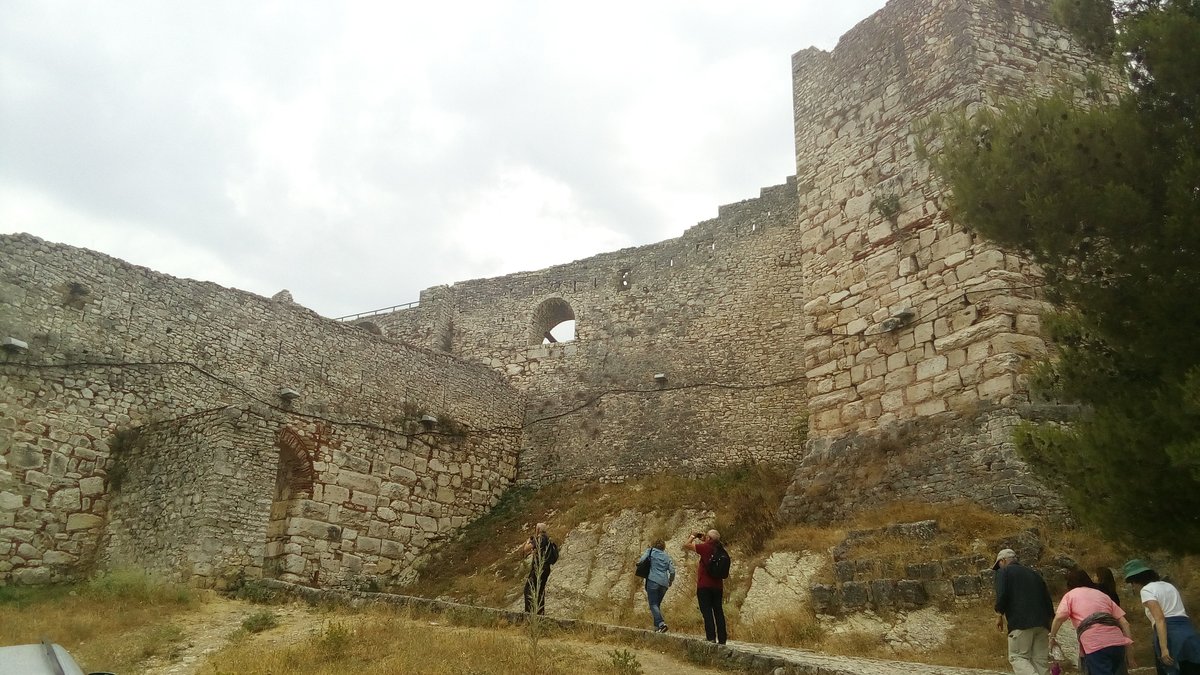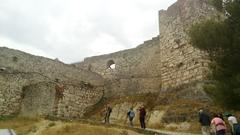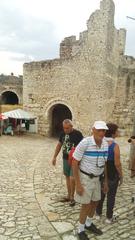
Water Cistern, Poliçan, Albania Visiting Hours, Tickets, and Historical Significance
Date: 01/08/2024
Introduction
Poliçan, a city located in south-central Albania, is a destination rich in history and cultural significance, particularly noted for its ancient and ingeniously crafted water cisterns. These structures, which date back to antiquity, have been central to the city’s development and sustainability. Poliçan’s strategic location and its industrial significance, especially during the Communist era, necessitated the creation of these cisterns to ensure a consistent water supply for its residents and industries. The water cisterns are not merely functional structures; they are emblematic of the city’s resilience and technological prowess across various historical periods. This guide seeks to provide a comprehensive understanding of the water cisterns in Poliçan, delving into their historical context, technological advancements, and their lasting cultural impact. Visitors and history enthusiasts will find valuable insights into the city’s innovative water management solutions, which have been preserved and repurposed to serve modern needs. For more detailed historical accounts and technical analyses, sources such as Wikipedia and Academia.edu offer extensive information.
Table of Contents
- Introduction
- Origins and Development
- Role During the Communist Era
- Technological Advancements
- Cultural and Social Impact
- Preservation and Modern Use
- Practical Visitor Information
- Further Reading
- FAQ
- Conclusion
Origins and Development
Poliçan’s strategic location and industrial background, particularly during the Communist era, necessitated innovative water management solutions. Water cisterns, used since ancient times, were vital in maintaining a stable water supply for the city’s growing population and industrial activities.
Role During the Communist Era
During the Communist regime, Poliçan was established as an industrial center primarily focused on the production of weapons and munitions. This period saw significant urban development, including the construction of water cisterns to support the burgeoning population and industrial activities. The city’s proximity to the Osum River provided a natural water source, but the need for reliable water storage led to the widespread use of cisterns. These structures were essential for maintaining water supply during dry periods and ensuring that the city’s industrial operations could continue uninterrupted.
Technological Advancements
The water cisterns in Poliçan reflect a blend of traditional and modern engineering techniques. Historically, cisterns were simple clay pots or large underground structures designed to collect and store rainwater. In Poliçan, the cisterns evolved to incorporate more advanced materials and construction methods, including reinforced concrete and sophisticated filtration systems. This evolution was driven by the need to support the city’s industrial activities and ensure a clean and reliable water supply for its residents.
Cultural and Social Impact
Water cisterns have had a profound impact on the social and cultural fabric of Poliçan. They are not just functional structures but also symbols of the city’s resilience and ingenuity. The communal use of cisterns fostered a sense of community among residents, who often collaborated in the maintenance and management of these vital resources. This communal spirit is still evident today, as many of the historical cisterns are preserved and maintained by local communities.
Preservation and Modern Use
Today, many of the historical water cisterns in Poliçan are preserved as cultural heritage sites. These cisterns offer a glimpse into the city’s past and its innovative approaches to water management. Some of the cisterns have been repurposed for modern use, including as tourist attractions and educational sites. Visitors to Poliçan can explore these historical structures and learn about their significance in the city’s development.
Practical Visitor Information
For tourists interested in exploring the historical water cisterns of Poliçan, here are some practical tips to enhance your visit:
Guided Tours
Consider joining a guided tour to gain in-depth knowledge about the history and significance of the cisterns. Local guides can provide valuable insights and anecdotes that you might not find in guidebooks.
Photography
The cisterns offer unique photographic opportunities, especially for those interested in historical architecture and engineering. Be sure to bring a camera to capture the intricate details of these structures.
Local Museums
Visit local museums that feature exhibits on the history of water management in Poliçan. These museums often have detailed displays and artifacts related to the cisterns and their role in the city’s development.
Respect the Sites
Many of the cisterns are located in residential areas or are still in use. Be respectful of the local communities and follow any guidelines or restrictions when visiting these sites.
Opening Hours and Tickets
Check the opening hours and ticket prices for the cisterns and related museums. Some sites may have seasonal hours or special events that are worth planning your visit around.
Nearby Attractions
Explore other nearby attractions in Poliçan, such as the Osum River, local parks, and historical landmarks to make the most of your visit.
Accessibility
Ensure that the sites you plan to visit are accessible, especially if you have mobility concerns. Some historical sites may have uneven terrain or limited access.
Further Reading
For those interested in learning more about the historical significance of water cisterns in Poliçan, several academic articles and resources are available. Notable sources include:
These resources provide detailed historical accounts and technical analyses of water cisterns, offering a comprehensive understanding of their development and significance.
FAQ
Q: What is the best time to visit Poliçan’s water cisterns?
A: The best time to visit is during the spring and autumn months when the weather is mild and the sites are less crowded.
Q: Are guided tours available year-round?
A: Yes, guided tours are typically available year-round, but it’s best to check with local tour operators for specific schedules and availability.
Q: Can I take photographs at the cistern sites?
A: Yes, photography is generally allowed, but be mindful of any restrictions or guidelines provided by site managers.
Conclusion
The water cisterns of Poliçan are a testament to the city’s historical ingenuity and resilience. From their origins in ancient times to their role during the Communist era and their preservation today, these structures highlight the importance of innovative water management solutions in urban development. For visitors, exploring these historical cisterns offers a unique opportunity to connect with Poliçan’s rich cultural heritage and appreciate the engineering marvels of the past.
Visit and Stay Up to Date
For more information, download our mobile app Audiala, check out other related posts on our site, and follow us on social media for the latest updates and travel tips.

